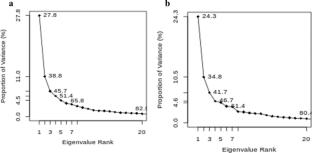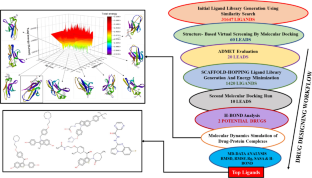An in-silico scaffold- hopping approach to design novel inhibitors against gp130: A potential therapeutic application in cancer and Covid-19
Abstract
An upregulation of the gp130-signalling cascade has been reported in multiple cancers, making gp130 an attractive target for the development of anticancer drugs. An inverted-funnel-like approach was utilised along with various structure-based drug designing strategies to discover and optimise novel potential inhibitors of gp130. The study resulted in the discovery of 2 ligands- 435 and 510, both of which exhibit a very high-binding affinity towards the gp130 D1 domain which controls cytokine recognition and interaction thus being involved in complexation. The two resulting complexes remained stable over time with the ligands maintaining a steady interaction with the target. This inference is drawn from their RMSD, Rg, SASA and RMSF analysis. We also tested the protein folding patterns based on their principal component analysis, energy of surface and landscape. The leads also displayed a more favourable ADMET profile than their parent compounds. The two lead candidates show a better therapeutic profile in comparison to the two existing drugs- bazedoxifene and raloxifene. Both these potential leads can be addressed for their activity in-vitro and can be used as a potential anti-cancer treatment as well as to combat Covid-19 related cytokine storm.



 求助内容:
求助内容: 应助结果提醒方式:
应助结果提醒方式:


